No one would have imagined that from being heavy, cumbersome, difficult to use, and generally used only by the troops, thermal night vision devices would evolve into pretty standard things for any traveler or nature lover and now into much lighter, easier to use.
A night vision monocular is roughly the same as binoculars but through which you look with one eye.
Human vision is not perfect. This imperfection manifests itself at the very first nightfall, or at least in low light conditions
The history of helmet development
Have you ever thought about how humanity managed to take place in the world that it occupies? Believe me, if you start to study this issue and look back, in thousands of years of human development, then you will be amazed. The pitiful and weak creatures we are from a wildlife perspective have never had anything to oppose their competitors in the food chain. Man is not gifted by nature. None of us have sharp fangs, deadly claws, animal speed, or tremendous strength. We do not know how to smell elusive smells, see in the dark, breathe underwater or fly in the sky. We are weak and vulnerable, and we will not be able to stand in an honest duel with the majority of representatives of the animal world. How did we manage to neutralize all these shortcomings and become the true kings of the planet?
Everything is straightforward. We have the ultimate weapon, which has given us a tremendous advantage over all potential competitors. Our brain. It is safe to say that humankind has secured an edge in all areas of survival thanks to him.
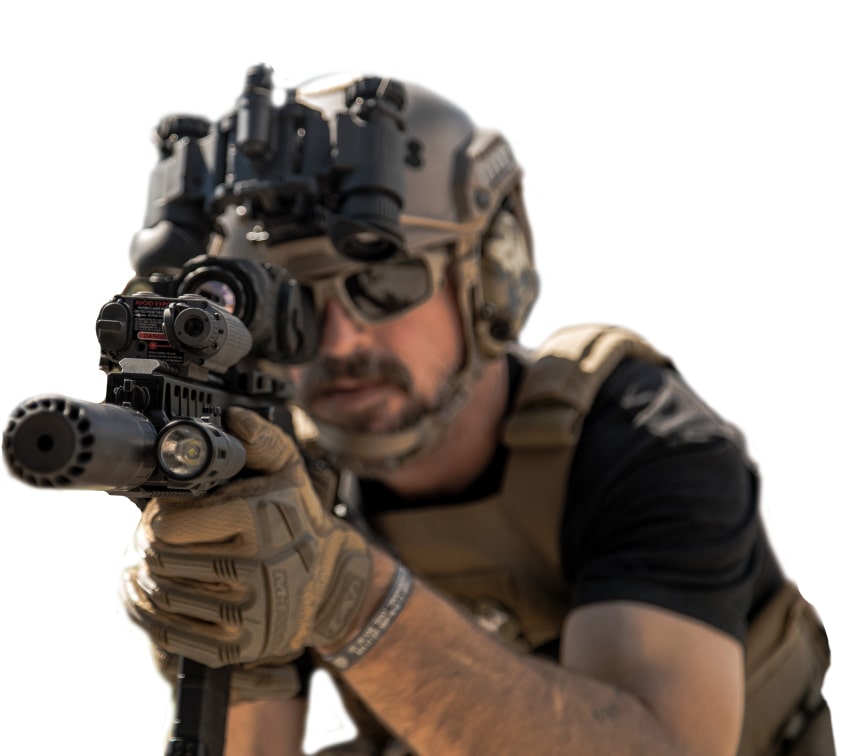
The history of the emergence of the helmet
The need to protect the vulnerable spots of the body has always existed. Rather, all the time when people fought or hunted. That is, yes - always. Even primitive tribes used all available technologies to make it difficult for a saber-toothed tiger to eat a hunter. Or so that a warrior of an enemy tribe could not cause significant harm. In general, a man began to think about protecting his vulnerable body simultaneously as he adapted the stick as a weapon. Another thing is that there was not enough technology to protect the head, and there was still a particular time before the birth of the prototype of the modern helmet.
But, this does not mean that our ancestors did not try. All materials that were used in everyday life were used to protect the head. Animal skins, wood, tree branches - everything at hand became the material for making a helmet. As you can imagine, the reliability and practicality of such products remained far from ideal. Therefore, when people learned how to process metal, it gave hope for the rapid development of defensive and defensive technologies. But, the development of humanity still lagged behind the thoughts and desires of people. Refining ore and smelting quality steel were still infinitely far away. Therefore, people made head protectors from soft types of metal. Modern archaeologists find similar items dating back to 3 thousand years BC. These were expensive pieces of armor that only the upper classes of society could afford. In addition, as you can imagine, soft metal is easy to process and has low protective characteristics due to its softness.
Some people tried to get out of the situation due to the lack of technology and scientific solutions. For example, in ancient Egypt, the army was equipped with light helmets made of linen and wood, into which small metal plates were inserted in critical places. On the other hand, Nomads made the so-called "paper hats," consisting of many layers of fabric, leather, pieces of armor, and in general, everything that is at hand and can hypothetically save lives.
It is worth noting that the eastern states were at the forefront of progress in those ancient times. Last but not least, this also applies to the art of war. Great attention was paid to this. Moreover, the experiments were not limited to materials for the manufacture of the helmet but also concerned with its shape. These questions were identical in terms of their priority levels.
The developments migrated through trade routes around the world. And they received their product in countries that represented the group of the strongest and richest at that time. The helmets of that time already differed from region to region. Being, at first glance, a very primitive piece of equipment in design, they had several important points that almost everyone observed. The desire to make the head protection monolithic, use the most durable material and improve ergonomics due to the gasket between the warrior's head and the helmet.
At the same time, the shape was very different. Many factors influenced it. The state's cultural and religious aspects, art paradigms, military tradition, the material of manufacture, and even enemies that the state most often faced. The last point should not be meaningless because understanding the principles and patterns of enemy combat is extremely important for determining the optimal defense methods.
Helmets in Ancient Greece and Ancient Rome
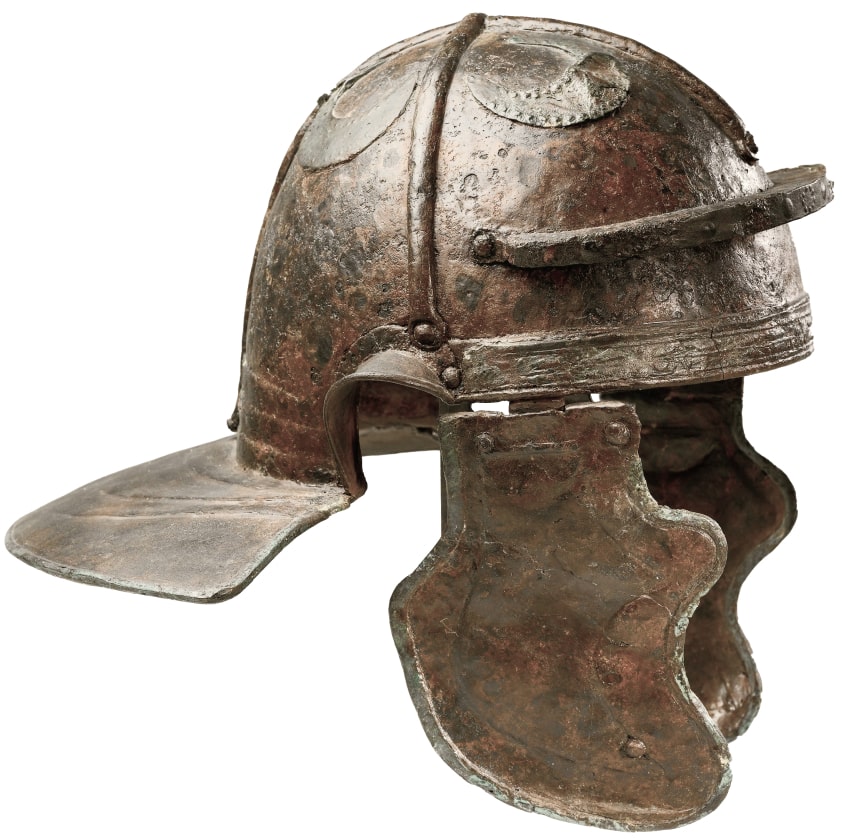 We deliberately singled out these two states since they were the leading geopolitical formations of the ancient world. Thanks to this, they accumulated all scientific, technical, and cultural achievements. It makes sense to say that it was here that the most advanced developments in military affairs were concentrated.
We deliberately singled out these two states since they were the leading geopolitical formations of the ancient world. Thanks to this, they accumulated all scientific, technical, and cultural achievements. It makes sense to say that it was here that the most advanced developments in military affairs were concentrated.
Moreover, the image of Greek and Roman soldiers in full gear was firmly entrenched in popular culture. And, the helmet is an integral part of this outfit. It's not just that.
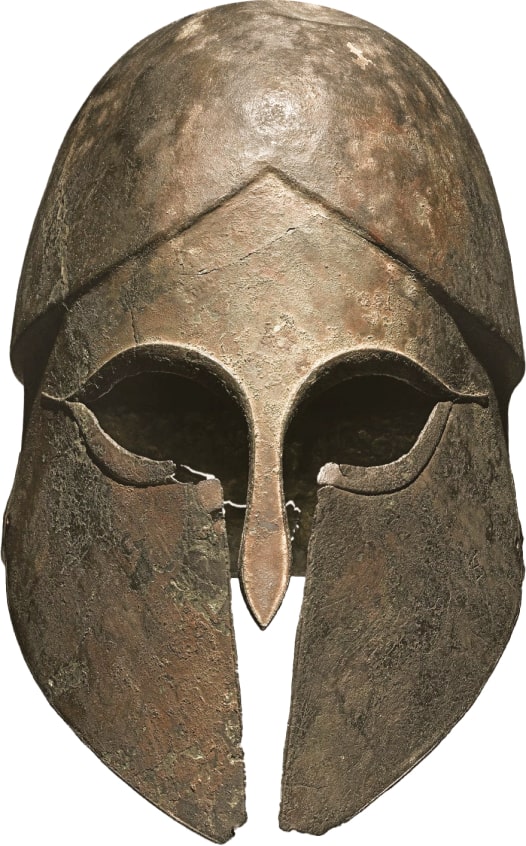 The Greeks back in the 4th century. BC NS. began to produce iron helmets. Production was sparse, as the technology was expensive, as were the materials. At the same time, the Greeks were creative in everything, including military ammunition. Therefore, even helmets look like real works of art. This was facilitated by the careful assimilation and conquest of other states. As a result, various techniques and creative solutions force modern scientists and archaeologists to divide Greek helmets into types. However, in the days of Ancient Greece, such a division did not exist. But, grouping by type makes sense since this type of protective equipment was incredibly diverse, as well as the linings under it and the ways of joining parts.
The Greeks back in the 4th century. BC NS. began to produce iron helmets. Production was sparse, as the technology was expensive, as were the materials. At the same time, the Greeks were creative in everything, including military ammunition. Therefore, even helmets look like real works of art. This was facilitated by the careful assimilation and conquest of other states. As a result, various techniques and creative solutions force modern scientists and archaeologists to divide Greek helmets into types. However, in the days of Ancient Greece, such a division did not exist. But, grouping by type makes sense since this type of protective equipment was incredibly diverse, as well as the linings under it and the ways of joining parts.
And do not forget about the original and bright ways to decorate helmets. The tradition, borrowed from the Mycenaean civilization, went down in history as a distinctive feature of the hoplites. Today, every schoolchild is familiar with the pompous combs made of horsehair or feathers, which ancient warriors proudly wore.
In ancient Rome, they also did not neglect the achievements of other states and used their inventions to create the most relevant and progressive weapons and protective equipment. But, unlike the Greeks, the Romans were more consistent and accurate in organizing helmets. Therefore, it is much easier for scientists to track all stages of the development of this defense element today.
The expansion of Rome and the permanent seizure of new territories influenced the development of military technologies of the Republic and after that of the Empire. They became a catalyst for the growth of the military affairs of enemies. A striking example of this symbiosis is the Romans' innovations in their helmets during the war with the Gauls, adopting some ideas and developments from them. On the other hand, Rome's invasion of the Alps was an occasion to improve the region's characteristic Negov Helmet.
Early and Late Middle Ages
During these times, the functions of the helmet were straightforward. He had to protect the soldier from blows with blunt and sharp weapons, less often - from arrows, spears, and darts. There were various types of helmets for these purposes, with multiple body kits that protect the neck, eyes, and the back of the head. Weak points that a warrior could injure with a high probability, depending on his military specialization and type of troops.
During this historical period, the helmet becomes an integral part of military equipment. Technology and production costs have already made it possible to turn this protective element into an obligatory piece of equipment. Regular troops and irregular light units of the Scandinavians all made every effort to protect the head. Therefore, everyone tried to provide themselves with additional chances of survival in battle.
It is probably safe to say that this historical period was the golden age in the heyday of the art of making helmets. Progressive trade and cultural integration and the rapid development of technology have resulted in a massive variety of types of this type of protection.
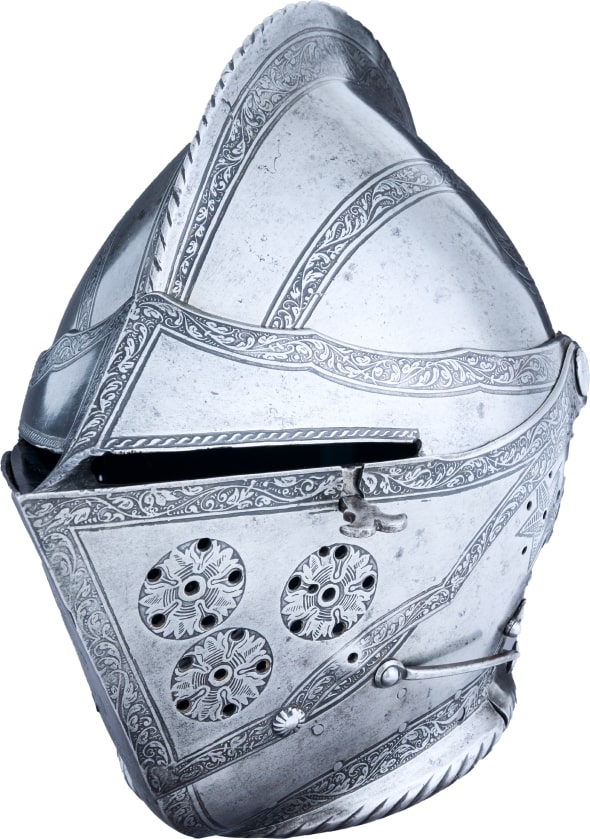 Despite the deep mutual integration of technologies, each nation, tribe, and state create their design options. The variety of materials, features, and decorations continues to amaze modern archaeologists. The light helmets of the Vikings are an incredible contrast to the heavy and intimidating helmets of the knights. Oriental helmets are striking in their elegance, and Japanese ones are unlike anything else. But, external signs do not shift priorities, and the main task of the helmet is to protect its owner. To this end, everyone is focused on creating a monolithic helmet stamping method. However, the protective capabilities of the existing types are more than enough. There is a shift in emphasis towards decoration and design. Now, helmets give their owners a chance to survive and frighten the enemy and contain a sacred meaning in ornaments and inscriptions. Knights of Western Europe have several types of helmets and armor: for tournaments, for war, for campaigns. These outfits cost like a small estate, but they give rise to a full-fledged culture that excites scholars and history buffs even today.
Despite the deep mutual integration of technologies, each nation, tribe, and state create their design options. The variety of materials, features, and decorations continues to amaze modern archaeologists. The light helmets of the Vikings are an incredible contrast to the heavy and intimidating helmets of the knights. Oriental helmets are striking in their elegance, and Japanese ones are unlike anything else. But, external signs do not shift priorities, and the main task of the helmet is to protect its owner. To this end, everyone is focused on creating a monolithic helmet stamping method. However, the protective capabilities of the existing types are more than enough. There is a shift in emphasis towards decoration and design. Now, helmets give their owners a chance to survive and frighten the enemy and contain a sacred meaning in ornaments and inscriptions. Knights of Western Europe have several types of helmets and armor: for tournaments, for war, for campaigns. These outfits cost like a small estate, but they give rise to a full-fledged culture that excites scholars and history buffs even today.
The role of the helmet in these times reaches its absolute peak. They play a crucial role in military conflicts, military science philosophy, and the culture of civilizations. We can safely say that the design and manufacturing method was correlated entirely with the current level of scientific thought. And, probably, helmets would have remained so, absorbing innovations but preserving their essence as was the case with pistols, which have not fundamentally changed from the late nineteenth century to today.
End of the era of helmets
Everything changed with the appearance of the first samples of firearms. At first, no one took this invention seriously. Guns were a lot more troublesome than helpful. This easily explains the relaxed attitude of the armies to the invention. And, it is true, in the form in which the technology existed, it was of little use. But, it evolved.
And by the eighteenth century, firearms technology had become a powerful argument on the battlefield. What does this mean? The fact that the methods of destruction have reached a new level. And also, the fact that armor and helmets that were effective a couple of centuries ago are no longer armor since they cannot stop even a primitive bullet. And if so, then why wear a bulky thing on your head that limits your view and hinders movement? There is no need.
The infantry is the first to abandon this element of protection and other aspects of heavy armor. The helmet will remain only in the cavalry troops, where it acquires a ceremonial function without having a particular combat function. This trend found an organic development in correlation with the development of weapons. So, large-caliber gunpowder weapons progressed much faster than personal weapons. And, during the Napoleonic Wars, artillery became the main threat to the troops. As you can imagine, when you are bombarded with cannonballs and buckshot, the use of a helmet is not so much. Much more important is the minimum equipment weight for the rapid execution of maneuvers that can save the life and the squad. Therefore, the functional role of the helmet tends to zero.
The history of helmet development
But helmets have not disappeared from the army—quite the opposite. Helmets take on a new function and explore completely different horizons. Now, this is just a specific headdress that emphasizes the status of the wearer. Now it is an element of the military image, a piece of equipment used to complete the idea of an officer, like aiguillettes or shiny belt buckles.
The rules of war have made the helmet's usefulness so insignificant that no one sees it as a protective element anymore. What does it mean? That you can no longer restrain your imagination.
Probably the most striking example of a new approach to helmet making is the Helm mit Spitze. If this is the first time you hear this German name, then the name Pickelheim will probably tell you more. This is the very same German leather helmet that became the quintessence and the most recognizable military headdress of this period. Useless and ridiculous, it was a hat with a gilded spire at the top. As you can imagine, this thing was infinitely far from the concept of utility, practicality, and ergonomics. The only plus of this thing was that it looked impressive and original.
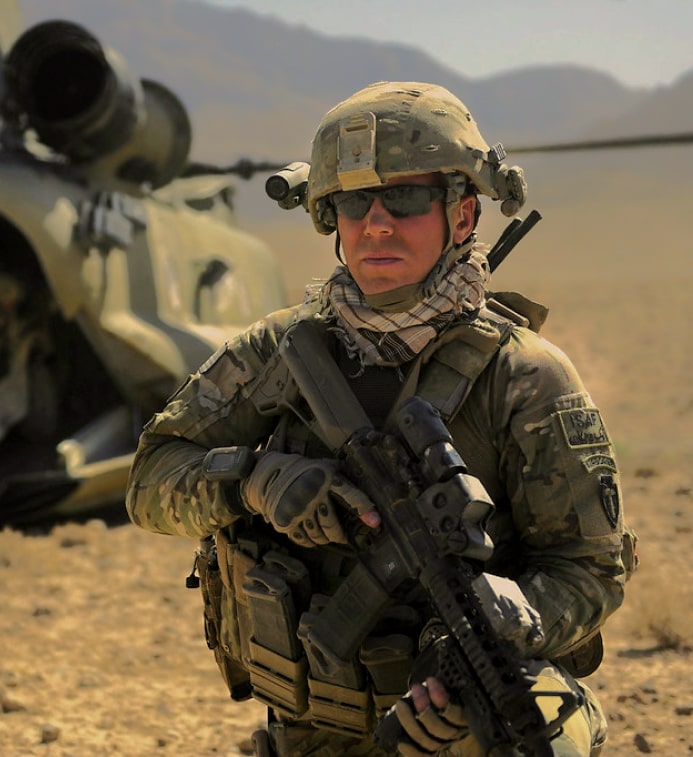
The return of the important role of helmets
This terrible time was the moment of the intersection of archaic military traditions and new deadly weapons. At that moment, there was no space where these two concepts would be combined. Leather caps with ridiculous spiers could not withstand machine guns and automatic pistols. In a full dress uniform with shiny buttons and belt buckles, in impractical helmets and with sabers, the troops were sent to the fields of the Great War. That war was not at all what everyone expected. It did not become a bright adventure in which young officers received medals and titles. She turned into a bloody meat grinder in the trenches, full of horror and hopelessness. How far the military industry had fallen behind in protecting the soldier was as apparent as to how well the industry had succeeded in inventing new assassination methods.
The world quickly learned its lesson. All countries, without exception, promptly rushed to correct what they missed in previous times of local conflicts and relative calm. In 1915-1916, the leading and most developed countries provided their troops with three main types of helmets, which became the basis for the development of modern helmets capable of protecting against modern weapons.
The infantry adopted the French Adrian's helmet and its modifications. Later, changes were created for tankers and cavalry. The design and technology were transferred to several other countries, which actively modified and used this invention. Despite the significant shortcomings of the helmet, statistics showed that the number of injuries in trench warfare fell by four times.
Brodie's helmet was designed by the British, who were inspired by the successes of the French. In 1915, this piece of equipment was adopted by the royal troops. And, it was an undoubted success. An absurd helmet, similar to a dinner plate, brilliantly protected the soldier in the trench. But, when the soldier got out of the track, all its shortcomings became evident. The main one was the lack of any protection from the rear and flanks of the head. The stubborn British, over time, finalized the design of the helmet, and in the future, it became more practical and reliable. But, all the same, it was losing to competitors from the opposing armies.
But, the main achievement of military engineers of that troubled time was the magnificent German Stahlhelm, aka "horned helmet." Why horned? It was just that the valves that blocked the vents of the helmet were a bit like growths. The shape of this helmet, its reliability, and its ergonomics (especially since the start of steel production) made it a long-term solution for the German army until the end of World War II and even longer.
With German pedantry, the design of the helmet has been thought out to the smallest detail. So, for example, "horns" not only protected the ventilation holes and betrayed special recognizability, but they also attached a frontal armored plate, which provided additional protection to the soldier, especially from snipers in the trench.
It was such a successful decision that it formed the basis for the long-term evolution of helmets. Even modern developers and engineers cite the ingenious solutions of the German creators Stahlhelm.
By the end of the Great War, helmets were so deeply integrated into the mythology of war that soldiers began to perceive them as an integral part of their equipment. The helmet has become part of the warrior, something without which he will not go to the battlefield, like boots or personal weapons. The Second World War only contributed to the development of this part of the protective ammunition. What was the result? It's straightforward: enhancing protection through materials and hiding vulnerable areas, and lightening the weight. During the second war, the most durable and reliable materials were used. At the same time, the number of design solutions decreases, and the shape of the helmet comes to unified patterns. It can be said that this period, and several conflicts after WWII, allowed the technology to reach its peak. The next step was to be a materials revolution. And very soon, it happened.

Modern helmets
The revolution took place in the 1980s. Before this, the approach of all countries was practically identical. Helmets were often made from sheet steel. And the patterns of the headdress were based on the same three main types developed at the beginning of the twentieth century. Even though the leading states followed their path, the developed algorithms were the same. Having chosen one primary template, the armies improved and modified it every ten or twenty years. Everything went smoothly and unchanged until the US made a breakthrough.
In 1980, the US Army adopted a helmet and body armor set called PASGT (Personnel Armor System for Ground Troops). It was not just a breakthrough but an exit to an entirely new level. Since this kit was created from non-metallic materials, in this helmet, the new Kevlar material was used for the first time in practice. The design of the helmet was almost perfect. It covers the forehead, ears, occipital and temporal parts of the head. In addition, it had a depreciation system. It was such a successful experiment that the PASGT is still used by support units of the US Army and some armies worldwide. In addition, all modern developments in creating an ideal helmet for a soldier are based on this model.
The United States has once again set new standards in the military sphere. It took five long years to catch up with the strongest army in the world. In 1985, Great Britain adopted a non-metallic modification of the MK helmet number 6. The Germans and French will present their counterparts a little later, in the early 90s. It becomes evident that a new era has come, and the future belongs to light and reliable armor.
In 2003, the US Army adopted the new MICH TC-2000 Combat Helmet and its improved version, the Advanced Combat Helmet.
What will change shortly? The vector of the technology of non-metallic materials for combat helmets is already recognized as effective and uncontested. As in the past, there are two tasks: to make the equipment more reliable and lighter. And it looks like scientists and engineers are doing the job brilliantly. The ideal shape is practically defined and is unlikely to change in the future. But what will change is the role of the battle helmet.
Already today, helmets of the world's leading armies are also an intercom, with several functions and increased ergonomics. The helmets of the future will project tactical information onto the warrior's transparent visor. Improved algorithms will allow you to maintain uninterrupted and high-quality communication with the headquarters and other group members. The device will generally be a symbiosis of innovative protective materials in an ergonomic form and a multimedia system.
After reading this article, if you doubt the importance of the helmet on the battlefield, we will not discuss this topic any-more. According to independent researchers, combat head injuries accounted for approximately 20 percent of fatal and non-fatal injuries during modern conflicts. That is, a reliable helmet saves life in every fifth case.
And, as you understood from our story, the history of the development of helmets is interesting, unusual, and original. There is no doubt that developing ideas for upgrading this piece of equipment will be just as intriguing. For this, our team will monitor and study the most relevant changes in the high-tech field of military equipment.
This proves that military science is not always aimed at destruction.
Without a doubt, this piece of ammunition is no less important than a machine gun in the hands of a soldier.
Conclusion
After reading this article, if you doubt the importance of the helmet on the battlefield, we will not discuss this topic any-more. According to independent researchers, combat head injuries accounted for approximately 20 percent of fatal and non-fatal injuries during modern conflicts. That is, a reliable helmet saves life in every fifth case.
And, as you understood from our story, the history of the development of helmets is interesting, unusual, and original. There is no doubt that developing ideas for upgrading this piece of equipment will be just as intriguing. For this, our team will monitor and study the most relevant changes in the high-tech field of military equipment.
This proves that military science is not always aimed at destruction.
Without a doubt, this piece of ammunition is no less important than a machine gun in the hands of a soldier.
